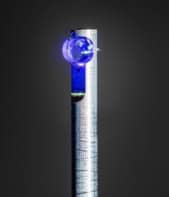Available to watch now, explore the proper use of a Warburg impedance for batteries
Want to learn more on this subject?

Recent battery papers commonly employ interpretation models for which diffusion impedances are in series with interfacial impedance. The models are fundamentally flawed because the diffusion impedance should be part of the interfacial impedance. A general approach is presented that shows how the charge-transfer resistance and diffusion resistance are functions of the concentration of reacting species at the electrode surface. The resulting impedance model incorporates diffusion impedances as part of the interfacial impedance.
A Q&A session follows the presentation.
Want to learn more on this subject?

Mark Orazem obtained his BS and MS degrees from Kansas State University and his PhD in 1983 from the University of California, Berkeley. In 1983, he began his career as assistant professor at the University of Virginia, and in 1988 joined the faculty of the University of Florida, where he is Distinguished Professor of Chemical Engineering and Associate Chair for Graduate Studies. Mark is a fellow of The Electrochemical Society, International Society of Electrochemistry, and American Association for the Advancement of Science. He served as President of the International Society of Electrochemistry and co-authored, with Bernard Tribollet of the Centre national de la recherche scientifique (CNRS), the textbook entitled Electrochemical Impedance Spectroscopy, now in its second edition. Mark received the ECS Henry B. Linford Award, ECS Corrosion Division H. H. Uhlig Award, and with co-author Bernard Tribollet, the 2019 Claude Gabrielli Award for contributions to electrochemical impedance spectroscopy. In addition to writing books, he has taught short courses on impedance spectroscopy for The Electrochemical Society since 2000.








